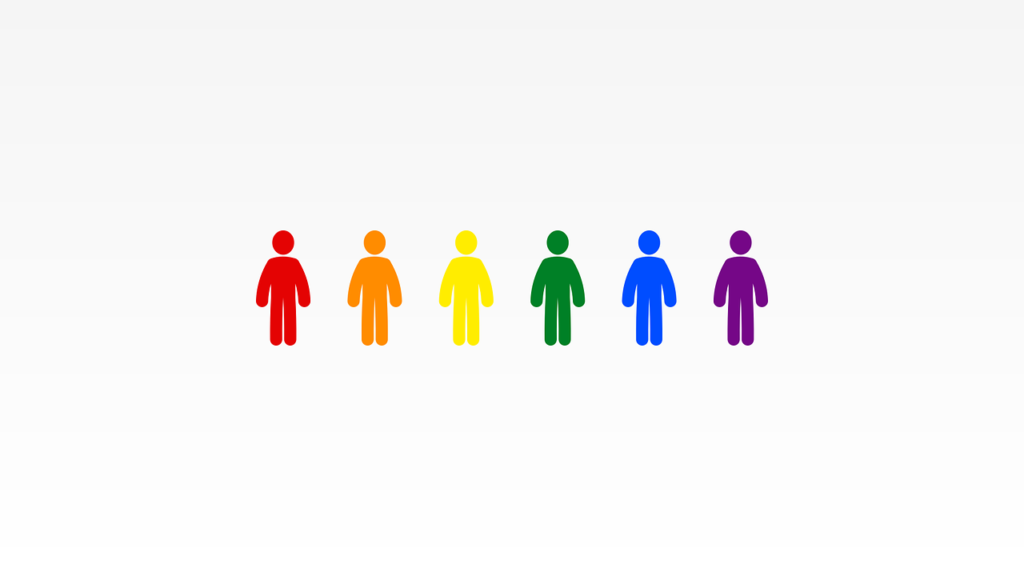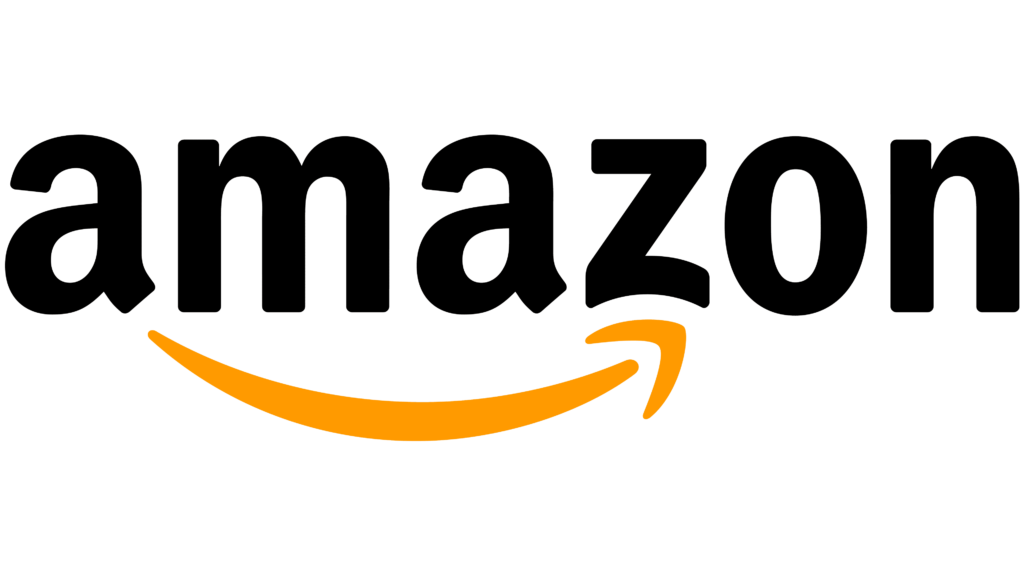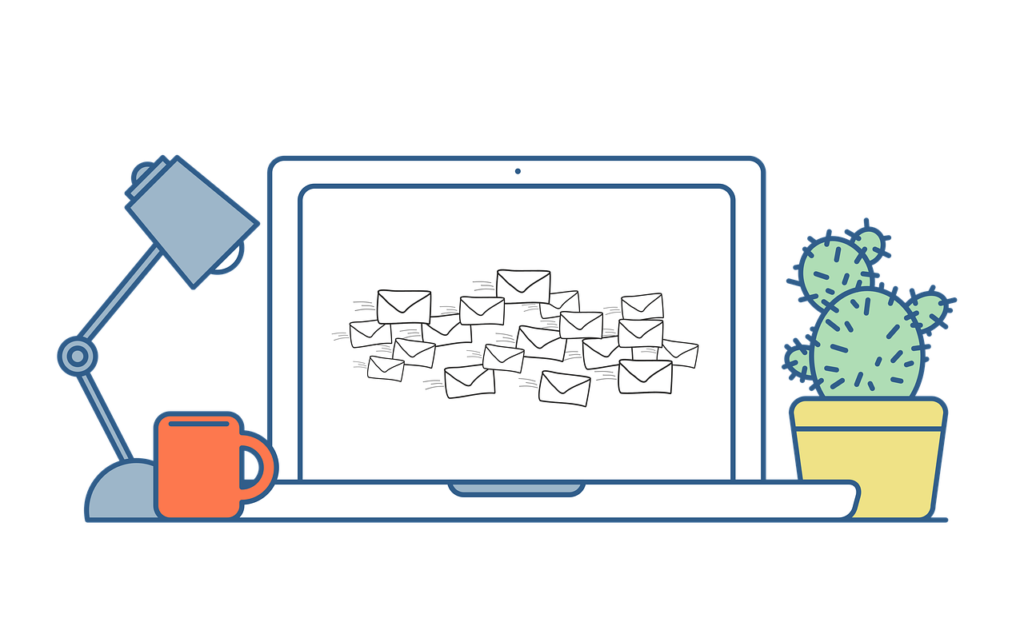This Article has been revised, edited and added to, by Poulomi Chakraborty.
- Why Segmentation Matters
- How to Segment Your Email List
- Benefits of Email Segmentation
- Strategies for Effective Segmentation
- Implementing Segmentation: Practical Steps
- Successful Segmentation in Email Marketing
- Overcoming Challenges in Segmentation
- Future Trends in Email Segmentation
- Best Practices for Email Segmentation
- Prioritize Data Quality
- Start with Clear Objectives
- Focus on the Subscriber Journey
- Use Progressive Profiling
- Personalize Beyond the Basics
- Segment Based on Engagement
- Test and Optimize Regularly
- Respect Privacy and Compliance
- Integrate with Other Marketing Channels
- Use Advanced Analytics
- Provide Value in Every Email
- Monitor and Respond to Feedback
- Conclusion
In the vast world of digital marketing, email remains one of the most powerful tools for reaching your audience. However, sending the same email to everyone on your list is like throwing a message in a bottle into the ocean, hoping it will reach the right shore. This is where segmentation comes in. Segmentation in email marketing means dividing your audience into smaller groups based on specific criteria. This allows you to send personalized and relevant messages to each group, increasing engagement and conversion rates.
Understanding your audience and crafting tailored messages for different segments can transform your email marketing from a shot in the dark to a targeted, effective strategy. Imagine receiving an email that speaks directly to your needs and interests—this is the power of segmentation. In this article, we will delve into the importance of segmentation, how to segment your email list effectively, and the benefits it brings to your email marketing campaigns.
Why Segmentation Matters

To understand the impact of segmentation, consider two hypothetical businesses: Business A and Business B. Both sell similar products, but their approach to email marketing is vastly different.
Business A sends out a generic email to its entire subscriber list every week. The emails contain a mix of product promotions, company news, and occasional discount offers.
The open rates are low, click-through rates are disappointing, and conversion rates are even lower. Many subscribers ignore these emails or unsubscribe because they don’t find them relevant.
Business B, on the other hand, segments its email list based on customer behavior, preferences, and demographics. They send tailored emails that cater to the specific interests of each segment. For instance, they send different emails to new subscribers, loyal customers, and those who haven’t made a purchase in a while. T
heir emails are personalized, relevant, and timely. As a result, Business B sees higher open rates, better click-through rates, and increased conversions. Subscribers are more engaged because they receive content that matters to them.
The comparison between these two businesses highlights the importance of segmentation in email marketing. By understanding and addressing the unique needs and interests of different segments of your audience, you can deliver more relevant content, build stronger relationships, and ultimately drive better results for your business.
How to Segment Your Email List
Effective segmentation starts with understanding your audience. Here are some key steps to segment your email list effectively:
Gather Data
The first step in segmentation is collecting data about your subscribers. This can include demographic information (age, gender, location), psychographic data (interests, lifestyle), and behavioral data (purchase history, email engagement). You can gather this data through sign-up forms, surveys, website analytics, and tracking email interactions.
Define Your Segments
Once you have collected the data, it’s time to define your segments. Here are some common ways to segment your email list:
Demographic Segmentation
Demographic segmentation involves dividing your audience based on demographic factors such as age, gender, income, education, and occupation. For example, a clothing retailer might segment its list into men and women, and further into age groups like 18-24, 25-34, etc.
Geographic Segmentation
Geographic segmentation divides your audience based on their location. This can be particularly useful for businesses with physical stores or those running location-based promotions. For example, a restaurant chain might send different emails to subscribers in different cities, promoting local events or offers.
Behavioral Segmentation
Behavioral segmentation is based on the actions and behaviors of your subscribers. This can include their purchase history, browsing behavior on your website, and engagement with previous emails.
For example, you can create segments for customers who have made a purchase in the last 30 days, those who have abandoned their cart, or those who have clicked on a specific type of product.
Psychographic Segmentation
Psychographic segmentation involves dividing your audience based on their interests, values, and lifestyle. This can be more challenging to gather but can lead to highly personalized and effective campaigns. For example, a fitness brand might segment its list into subscribers interested in yoga, weightlifting, and running, and tailor their emails accordingly.
Create Personalized Content
Once you have defined your segments, the next step is to create personalized content for each segment. Personalization goes beyond just using the subscriber’s name in the email. It involves tailoring the content, offers, and messaging to meet the specific needs and interests of each segment.
Test and Optimize
Segmentation is not a one-time task; it’s an ongoing process. It’s essential to test different segmentation strategies and continuously optimize your campaigns based on the results.
Use A/B testing to compare different approaches and analyze the performance of your segmented emails. This will help you refine your segmentation and improve your overall email marketing strategy.
Benefits of Email Segmentation
Segmentation in email marketing offers a multitude of benefits that can significantly enhance the effectiveness of your campaigns. By targeting the right audience with the right message, you can improve engagement, increase conversions, and build stronger relationships with your subscribers. Here are some key benefits of email segmentation:
Increased Open Rates
When subscribers receive emails that are relevant to their interests and needs, they are more likely to open them. Segmented email campaigns often have higher open rates compared to non-segmented campaigns because the content resonates with the audience.
For example, a travel agency might segment its list into adventure travelers, luxury travelers, and family vacationers, sending tailored emails that speak directly to each group’s preferences.
Higher Click-Through Rates
Segmentation allows you to send targeted content that encourages subscribers to take action. By providing valuable information and offers that align with their interests, you can increase click-through rates.
For instance, an online bookstore might send personalized recommendations based on previous purchases or browsing behavior, prompting subscribers to click through and explore new books.
Improved Conversion Rates
When your emails are relevant and engaging, subscribers are more likely to convert. Segmented campaigns can lead to higher conversion rates because they address the specific needs and pain points of each segment.
For example, an e-commerce store might offer a special discount to first-time buyers, a loyalty reward to repeat customers, and a re-engagement offer to inactive subscribers.
Reduced Unsubscribe Rates
Sending irrelevant emails can frustrate subscribers and lead to higher unsubscribe rates. By segmenting your list and sending personalized content, you can reduce the likelihood of unsubscribes.
Subscribers are more likely to stay on your list if they receive emails that are tailored to their interests and preferences. For instance, a fitness brand can send workout tips to fitness enthusiasts and nutrition advice to those interested in healthy eating, keeping both segments engaged.
Enhanced Customer Relationships
Segmentation allows you to build stronger relationships with your subscribers by showing that you understand and care about their needs. Personalized emails create a sense of connection and trust, which can lead to increased loyalty and long-term customer relationships.
For example, a pet supply store might send birthday offers for pets, product recommendations based on pet type, and helpful tips for pet care, fostering a deeper connection with pet owners.
Better Data Insights
Segmentation provides valuable insights into the preferences and behaviors of different segments of your audience. By analyzing the performance of your segmented campaigns, you can gain a deeper understanding of what works and what doesn’t.
This data can inform your overall marketing strategy and help you make more informed decisions. For instance, a beauty brand might discover that skincare products perform better with a specific age group, allowing them to focus their efforts on that segment.
Cost Efficiency
Sending targeted emails to specific segments can be more cost-effective than sending a one-size-fits-all email to your entire list. By focusing your resources on the most relevant segments, you can achieve better results with fewer emails.
This can lead to a higher return on investment (ROI) for your email marketing campaigns. For example, a software company might send trial offers to potential customers who have shown interest in their products, rather than sending the same offer to everyone on their list.
Strategies for Effective Segmentation

To achieve the benefits of segmentation, it’s essential to implement effective strategies that cater to the unique needs of your audience. Here are some strategies to consider:
Use Dynamic Content
Dynamic content allows you to create personalized emails for different segments without having to create multiple versions of the same email. By using dynamic content blocks, you can tailor specific parts of the email (such as images, text, and offers) based on the segment.
For example, a retail store might use dynamic content to show different product recommendations to male and female subscribers within the same email template.
Leverage Automation
Automation tools can help you streamline your segmentation efforts and send timely, relevant emails to each segment. Automated workflows can trigger emails based on subscriber actions, such as signing up, making a purchase, or abandoning a cart.
For instance, an online course provider might set up an automated welcome series for new subscribers, followed by targeted course recommendations based on their interests.
Personalize Beyond the Name
While using the subscriber’s name in the email is a good start, true personalization goes much further. Use the data you’ve collected to tailor the content, offers, and messaging to each segment.
For example, a subscription box service might personalize the email subject line, product recommendations, and special offers based on the subscriber’s previous box selections and feedback.
Segment by Engagement
Segmenting your list based on engagement levels can help you target subscribers more effectively. Create segments for highly engaged subscribers, moderately engaged subscribers, and inactive subscribers, and tailor your emails accordingly.
For example, a newsletter publisher might send exclusive content and rewards to highly engaged subscribers, while sending re-engagement campaigns to inactive subscribers to bring them back.
Test and Iterate
Testing is crucial for optimizing your segmentation strategy. Use A/B testing to compare different segmentation approaches and analyze the results. Test different variables such as subject lines, email content, and send times to see what resonates best with each segment.
For example, a travel company might test different subject lines for their adventure travel segment to determine which one generates the highest open rates.
Implementing Segmentation: Practical Steps
Implementing segmentation in your email marketing strategy involves a series of practical steps. These steps will help you gather the necessary data, define your segments, and create personalized campaigns that resonate with your audience. Here’s how you can get started:
Collect and Organize Data
Data is the foundation of effective segmentation. Here are some ways to collect and organize subscriber data:
Sign-Up Forms
Enhance your sign-up forms to collect more than just the basic email address. Ask for additional information that can help with segmentation, such as name, location, interests, and preferences. For example, a fashion retailer might include fields for gender, preferred clothing style, and size.
Surveys and Polls
Conduct surveys and polls to gather insights directly from your subscribers. This can help you understand their preferences, behaviors, and pain points. For example, an online magazine might send a survey asking readers about their favorite topics and types of content they enjoy.
Purchase and Browsing History
Analyze your subscribers’ purchase and browsing history to identify patterns and preferences. This data can be invaluable for behavioral segmentation. For example, an electronics store might track which products a customer has viewed or purchased and send personalized recommendations based on that data.
Email Engagement Metrics
Track how your subscribers interact with your emails. Metrics such as open rates, click-through rates, and time spent reading can provide insights into their interests and engagement levels. For example, a fitness app might segment users based on their engagement with workout routine emails.
Define Clear Segments
Once you have collected and organized your data, it’s time to define clear segments. Here are some tips for creating effective segments:
Start Small
If you’re new to segmentation, start with a few simple segments and gradually add more as you become comfortable. For example, you might begin by segmenting your list into new subscribers, active customers, and inactive customers.
Focus on Key Metrics
Identify the key metrics that are most relevant to your business goals. These could include demographics, purchase history, engagement levels, and more. For example, a subscription service might focus on subscription status (active, paused, canceled) as a primary segmentation criterion.
Use Predictive Analytics
Predictive analytics tools can help you anticipate future behaviors and preferences based on past data. This can be particularly useful for creating dynamic segments that evolve over time. For example, a travel agency might use predictive analytics to identify subscribers who are likely to book a trip within the next three months.
Craft Tailored Content
Once you have defined your segments, the next step is to craft tailored content for each segment. Here’s how you can create personalized and engaging emails:
Relevant Subject Lines
The subject line is the first thing your subscribers see, so make it relevant and compelling. Tailor the subject line to each segment to increase open rates. For example, a beauty brand might use “Exclusive Skincare Tips for You” for one segment and “New Makeup Trends to Try” for another.
Personalized Messaging
Go beyond the basic personalization of using the subscriber’s name. Address their specific needs, interests, and pain points in the email content. For example, a home improvement store might send DIY project ideas to one segment and professional services promotions to another.
Dynamic Content Blocks
Use dynamic content blocks to tailor specific parts of the email based on the segment. This allows you to create one email template with different content variations. For example, an online bookstore might feature different book recommendations for fiction lovers and non-fiction enthusiasts within the same email.
Visual Appeal
Ensure your emails are visually appealing and consistent with your brand. Use images, colors, and layouts that resonate with each segment. For example, a travel company might use vibrant images of adventure destinations for thrill-seekers and serene beach scenes for relaxation seekers.
Automate Your Campaigns
Automation can streamline your segmentation efforts and ensure timely, relevant emails. Here’s how to leverage automation effectively:
Triggered Emails
Set up triggered emails based on specific actions or behaviors. For example, a software company might send a welcome email series to new subscribers, a trial extension offer to those nearing the end of their trial period, and a re-engagement email to inactive users.
Drip Campaigns
Create drip campaigns that deliver a series of emails over time based on subscriber actions. For example, an educational platform might send a series of onboarding emails to new users, followed by course recommendations based on their initial interactions.
Behavioral Triggers
Use behavioral triggers to send targeted emails based on specific actions, such as cart abandonment, product views, or download completions. For example, an e-commerce store might send a reminder email with a special offer to customers who abandoned their cart.
Monitor and Optimize
Regularly monitor the performance of your segmented campaigns and make data-driven adjustments. Here’s how to ensure continuous improvement:
Analyze Key Metrics
Track key metrics such as open rates, click-through rates, conversion rates, and unsubscribe rates for each segment. Identify patterns and trends to understand what’s working and what needs improvement. For example, a nonprofit organization might analyze donation rates for different segments to refine their appeals.
Conduct A/B Testing
Run A/B tests to compare different elements of your segmented emails, such as subject lines, content, and send times. Use the results to optimize your campaigns. For example, an online retailer might test different discount offers for various segments to see which one drives the most sales.
Gather Feedback
Solicit feedback from your subscribers to understand their preferences and satisfaction with your emails. Use surveys, polls, and direct responses to gather insights. For example, a travel newsletter might ask readers for their feedback on the types of destinations and travel tips they prefer.
Iterate and Improve
Continuously refine your segmentation strategy based on the insights you gather. Adjust your segments, personalize your content, and optimize your campaigns to achieve better results over time. For example, a tech company might refine its segments based on new product launches and customer feedback.

At Langchu Light, we retarget our email list in a planned way to get more people to interact with it. First, we divide our email list into groups based on things like past purchases, website behavior, and demographic data.
We can better tailor the content of our emails to the interests and preferences of different groups in our audience thanks to this segmentation.
After dividing our subscribers into groups, we use personalized email campaigns that are based on their interests and past actions to get them interested again.
For example, we send reminder emails with special deals or limited-time offers to customers who have left items in their shopping carts but haven’t finished their purchase yet.
We send re-engagement campaigns with new product highlights or exclusive content to email subscribers who haven’t opened our emails in a while.
In addition to personalized content, we use dynamic content blocks in our emails to send each recipient personalized product suggestions based on how they have used our website or what they have bought in the past. This helps make our emails more interesting and useful for each subscriber.
We use email marketing analytics tools to keep an eye on key metrics like open rates, click-through rates, conversion rates, and overall engagement levels to see how well our retargeting is working. We also keep track of specific things that people do after receiving our emails, like buying things because of them.
Echo Yao, Designer and Co-founder of Langchu Lighting

Related: Check out our free SEO suite

Successful Segmentation in Email Marketing
To truly understand the impact of segmentation in email marketing, let’s explore some real-world case studies where businesses have effectively used segmentation to enhance their campaigns and achieve remarkable results.
Amazon

Background: Amazon, one of the largest e-commerce platforms globally, relies heavily on email marketing to engage with its vast customer base.
Segmentation Strategy: Amazon utilizes behavioral segmentation to tailor its emails based on customers’ browsing and purchase history. They send personalized product recommendations, reminders for abandoned carts, and follow-up emails for recent purchases.
Results: By leveraging behavioral data, Amazon significantly increases its email open rates and click-through rates. Customers receive emails that are highly relevant to their interests, leading to higher engagement and increased sales. This personalized approach helps Amazon maintain strong customer loyalty and retention.
Netflix

Background: Netflix, a leading streaming service, uses email marketing to keep subscribers informed about new content and to encourage continued engagement with their platform.
Segmentation Strategy: Netflix segments its email list based on viewing history and user preferences. They send personalized recommendations for movies and TV shows, updates on new releases, and tailored content suggestions.
Results: Netflix’s segmentation strategy results in highly engaging emails that resonate with subscribers. The personalized recommendations lead to increased content consumption and higher subscriber retention rates. By understanding and catering to individual preferences, Netflix maintains a loyal and satisfied user base.
Airbnb

Background: Airbnb, a popular online marketplace for lodging and experiences, uses email marketing to connect with both hosts and guests.
Segmentation Strategy: Airbnb segments its email list based on user roles (hosts or guests), past booking behavior, and geographic location. They send tailored emails with travel recommendations, booking reminders, and tips for hosts to enhance their listings.
Results: Airbnb’s targeted emails result in higher open and click-through rates. By providing relevant and timely information, Airbnb enhances the user experience for both hosts and guests. This approach drives increased bookings and fosters a strong sense of community within their platform.
Spotify

Background: Spotify, a leading music streaming service, uses email marketing to engage with its subscribers and promote personalized playlists.
Segmentation Strategy: Spotify segments its email list based on listening behavior and user preferences. They send personalized emails featuring curated playlists, new music releases, and concert notifications based on users’ favorite artists and genres.
Results: Spotify’s personalized emails achieve high engagement rates, with subscribers frequently opening and clicking through to explore the suggested content. This tailored approach enhances the user experience, leading to higher retention rates and increased music streaming on the platform.
Sephora

Background: Sephora, a multinational chain of personal care and beauty stores, uses email marketing to connect with its diverse customer base.
Segmentation Strategy: Sephora segments its email list based on customer demographics, purchase history, and beauty preferences. They send personalized product recommendations, beauty tips, and exclusive offers tailored to each customer’s profile.
Results: Sephora’s segmentation strategy leads to higher open rates and click-through rates. Customers receive emails that are highly relevant to their beauty needs, resulting in increased sales and customer satisfaction. The personalized approach helps Sephora build strong relationships with its customers and encourages repeat purchases.
Overcoming Challenges in Segmentation
While segmentation offers numerous benefits, it also presents certain challenges that marketers need to address. Here are some common challenges and how to overcome them:
Data Collection and Management
Challenge: Collecting and managing the necessary data for effective segmentation can be daunting, especially for businesses with large subscriber lists.
Solution: Invest in robust email marketing and customer relationship management (CRM) tools that can handle data collection and analysis efficiently. Ensure your sign-up forms, surveys, and tracking mechanisms are designed to gather relevant data without overwhelming subscribers.
Maintaining Data Accuracy
Challenge: Ensuring the accuracy and up-to-dateness of your data is crucial for effective segmentation. Inaccurate or outdated data can lead to irrelevant emails and reduced engagement.
Solution: Regularly clean and update your email list to maintain data accuracy. Implement automated processes for data validation and enrichment. Encourage subscribers to update their preferences and information periodically through preference centers.
Creating Relevant Content for Each Segment
Challenge: Crafting personalized content for multiple segments can be time-consuming and resource-intensive.
Solution: Use dynamic content and automation to streamline the process. Create a content library with modular pieces that can be easily customized for different segments. Leverage AI and machine learning tools to generate personalized content at scale.
Avoiding Over-Segmentation
Challenge: Over-segmentation can lead to excessively narrow segments, making it difficult to manage and deliver relevant content to each group.
Solution: Strike a balance by focusing on key segments that provide the most value. Start with broader segments and refine them over time based on performance data. Ensure each segment is large enough to justify targeted campaigns and measureable results.
Measuring ROI and Performance
Challenge: Measuring the return on investment (ROI) and performance of segmented campaigns can be complex.
Solution: Define clear metrics and key performance indicators (KPIs) for each segment and campaign. Use analytics tools to track and analyze the performance of your emails. Regularly review and adjust your segmentation strategy based on the insights you gather.
Future Trends in Email Segmentation

The landscape of email marketing is constantly evolving, and staying ahead of the trends can give you a competitive edge. Here are some future trends in email segmentation to watch out for:
AI and Machine Learning
Artificial intelligence (AI) and machine learning are transforming email segmentation. These technologies can analyze vast amounts of data to identify patterns and predict subscriber behavior.
AI-powered tools can automate segmentation, personalize content, and optimize send times, making your email campaigns more effective and efficient.
Hyper-Personalization
Hyper-personalization takes segmentation to the next level by delivering highly customized experiences based on real-time data. This involves using advanced data analytics to understand individual preferences and behaviors, allowing you to send emails that feel uniquely tailored to each subscriber.
For example, a travel company might use hyper-personalization to send real-time flight and hotel recommendations based on a subscriber’s current location and browsing history.
Predictive Segmentation
Predictive segmentation uses data and algorithms to forecast future behaviors and trends. This allows you to proactively engage with subscribers based on predicted actions, such as upcoming purchases or potential churn.
For example, an online retailer might use predictive segmentation to identify customers who are likely to make a purchase within the next month and send targeted offers to encourage conversion.
Integration with Other Marketing Channels
Integrating email segmentation with other marketing channels, such as social media, SMS, and web push notifications, can create a cohesive and consistent customer experience.
This omnichannel approach ensures that your messaging is aligned across all touchpoints, enhancing the overall effectiveness of your marketing efforts. For example, a fashion brand might use email segmentation to send personalized offers and then retarget those same segments with ads on social media.
Privacy and Data Protection
As data privacy regulations become stricter, marketers need to ensure their segmentation practices comply with legal requirements. This includes obtaining explicit consent for data collection, being transparent about data usage, and providing options for subscribers to manage their preferences.
Adhering to privacy standards builds trust with your audience and ensures the long-term sustainability of your email marketing efforts.

Personalized Retargeting Campaigns:
Creating segments within your email list based on behavior, preferences, and past interactions allows for highly personalized communication. By tailoring the content to meet the specific needs and interests of each segment, you can dramatically increase engagement.
Implementing dynamic content that changes based on the recipient’s previous interactions with your emails or website further personalizes the experience, leading to higher open and click-through rates.
Integration with Paid Ads:
Utilizing email marketing data to inform your paid advertising strategies can significantly improve your retargeting efforts. For instance, by identifying segments such as those who have abandoned their cart or shown interest in specific products, you can create targeted ads that resonate with their specific needs.
This strategy not only increases the relevance of your ads but also enhances the chances of conversion.
Cross-Platform Engagement:
Expanding your retargeting strategies across multiple platforms ensures that you maintain consistent communication with your audience, regardless of where they are.
By synchronizing your messages across email, social media, and other digital channels, you can increase the touchpoints with your audience, reinforcing your brand message and improving overall engagement.
Continuous Optimization Through A/B Testing:
Regularly testing different aspects of your email campaigns, from subject lines to call-to-action buttons, provides insights into what resonates best with your audience.
By continually refining your approach based on real-time data, you can enhance the effectiveness of your campaigns, ensuring that they remain engaging and relevant.
Analytics and Tracking:
Monitoring key performance indicators such as open rates, click-through rates, and conversion rates is crucial for assessing the success of your retargeting campaigns. Tools like Google Analytics and various CRM platforms offer detailed analytics that can help you track these metrics effectively.
This data not only allows you to measure the immediate impact of your campaigns but also informs future strategy by highlighting areas for improvement.
Results:
By implementing these strategies, businesses can expect to see significant improvements in their email engagement rates. Though results can vary, it’s not uncommon to witness a 10-20% increase in open rates and a 5-10% boost in click-through rates after integrating personalized retargeting campaigns.
Moreover, such targeted efforts often lead to higher conversion rates, as the content is highly relevant to the audience’s current needs and interests.
Sergey Solonenko, Founder and CMO of Algocentric Digital Consultancy
Best Practices for Email Segmentation
To make the most out of email segmentation, it’s essential to follow best practices that ensure your campaigns are effective, compliant, and well-received by your audience. Here are some best practices to guide your segmentation efforts:
Prioritize Data Quality
High-quality data is the cornerstone of successful segmentation. Ensure that the data you collect is accurate, up-to-date, and relevant. Regularly clean your email list to remove inactive or invalid email addresses. Use double opt-in forms to confirm subscribers’ interest and ensure the information they provide is accurate.
Start with Clear Objectives
Before you start segmenting your list, define clear objectives for your email campaigns. Understand what you aim to achieve with your segmentation strategy, whether it’s increasing sales, improving engagement, or reducing unsubscribe rates. Clear objectives will guide your segmentation decisions and help you measure success.
Focus on the Subscriber Journey
Consider the entire customer journey when creating segments. Tailor your emails to address the specific needs and pain points of subscribers at different stages, from new subscribers and first-time buyers to loyal customers and those at risk of churning. This approach ensures that your messaging is relevant and timely.
Use Progressive Profiling
Progressive profiling involves gradually collecting information about subscribers over time rather than asking for extensive details upfront. This approach minimizes friction during sign-up and allows you to build a comprehensive profile of your subscribers. For example, you might start with basic demographic information and later ask for preferences and interests in follow-up emails.
Personalize Beyond the Basics
Effective segmentation goes beyond basic personalization like using the subscriber’s name. Incorporate dynamic content that changes based on the subscriber’s preferences, behavior, and engagement history. Tailor your subject lines, email content, and calls-to-action to resonate with each segment.
Segment Based on Engagement
Segment your email list based on engagement levels to ensure you’re sending the right content to the right people. Identify highly engaged subscribers, moderately engaged subscribers, and those who are inactive. Tailor your messaging accordingly, offering exclusive content and rewards to engaged subscribers and re-engagement campaigns to inactive ones.
Test and Optimize Regularly
Continuous testing and optimization are crucial for refining your segmentation strategy. Conduct A/B tests on various elements of your emails, such as subject lines, content, and send times. Analyze the results to understand what works best for each segment and make data-driven adjustments to improve performance.
Respect Privacy and Compliance
Ensure that your segmentation practices comply with data privacy regulations like GDPR and CCPA. Obtain explicit consent from subscribers for data collection and usage. Be transparent about how you use their data and provide easy options for them to manage their preferences and unsubscribe if they choose.
Integrate with Other Marketing Channels
Integrate your email segmentation strategy with other marketing channels to create a cohesive customer experience. Coordinate your messaging across email, social media, SMS, and other platforms to ensure consistency and reinforce your brand. For example, use email to drive traffic to your social media profiles and vice versa.
Use Advanced Analytics
Leverage advanced analytics to gain deeper insights into subscriber behavior and preferences. Use tools like predictive analytics and machine learning to identify trends and anticipate future actions. These insights can help you create more accurate and effective segments, leading to better-targeted campaigns.
Provide Value in Every Email
Regardless of the segment, ensure that every email you send provides value to the subscriber. Whether it’s through informative content, exclusive offers, or helpful tips, your emails should always aim to enhance the subscriber’s experience with your brand. This approach fosters trust and encourages long-term engagement.
Monitor and Respond to Feedback
Actively seek and respond to feedback from your subscribers. Use surveys, polls, and direct interactions to gather insights on their preferences and satisfaction with your emails. Use this feedback to refine your segmentation strategy and improve the relevance and quality of your content.
By following these best practices, you can create a robust segmentation strategy that enhances the effectiveness of your email marketing campaigns. Implementing these practices will help you deliver more personalized and engaging content, resulting in higher engagement, better conversion rates, and stronger customer relationships.
Conclusion
Segmentation in email marketing is a powerful strategy that enables you to target the right audience with the right message. By understanding your audience, collecting and managing data, defining clear segments, and crafting personalized content, you can significantly enhance the effectiveness of your email campaigns. The benefits of segmentation include increased open rates, higher click-through rates, improved conversion rates, reduced unsubscribe rates, enhanced customer relationships, better data insights, and cost efficiency.
Implementing segmentation requires careful planning and ongoing optimization. Use dynamic content, leverage automation, monitor key metrics, conduct A/B testing, and gather feedback to continuously improve your strategy. Overcoming challenges such as data collection, maintaining accuracy, creating relevant content, avoiding over-segmentation, and measuring ROI is essential for success.
Looking ahead, trends such as AI and machine learning, hyper-personalization, predictive segmentation, integration with other marketing channels, and data privacy will shape the future of email segmentation. Staying ahead of these trends and adapting your strategies accordingly will give you a competitive edge in the ever-evolving landscape of email marketing.
Read next




















